Listen to the radio version here.
On May 21, we had a migration fallout at Park Point in Duluth. My friends Kristina and Clinton Dexter-Nienhaus were leading a field trip for Duluth Audubon so I went along. Our group found 20 species of warblers and a bunch of other cool migrants. I spent some time watching a nearby Philadelphia Vireo, but in the low-light fog, I took only one usable photo.
Two years ago, on May 29, 2022, in pretty much the same conditions, I photographed a Philadelphia Vireo in the same area, but again, my photos were nothing to write home about.
At the tail-end of spring migration last year when I was birding at Park Point on a beautiful, sunny day, I turned on Merlin, a wonderful, free app from the Cornell Lab of Ornithology that identifies bird songs and calls in real time, and it listed a Philadelphia Vireo. I was thrilled because this time conditions for photography were perfect.
The much more abundant Red-eyed Vireo has a very similar song, making it hard for me to tell the two species apart by voice, but I figured there must be enough differences, subtle though they may be for mere human ears, for Merlin to get it right. I got closer and closer, the app showing “Philadelphia Vireo” with every one of the bird’s phrases, but when I finally found the singer, he was a Red-eyed Vireo. He wasn’t the bird I was hoping for, but I took his picture anyway.
In most places, Merlin has an excellent track record—here in Duluth it misses some birds altogether and gets some wrong sometimes, but I bet it calls out vocalizing birds with 85 or 90 percent accuracy, excellent for such a relatively new and very complex algorithm. But Merlin was utterly worthless for me in Hawaiʻi—it doesn’t have enough Hawaiian bird vocalizations in its database yet, so it could not identify a single one of the endemics I encountered and got most of the exotics wrong, too.
Merlin may be far from perfect, but I use it a lot. I often make ambient sound recordings in my yard and elsewhere, and when I’m tagging the species that night, I use Merlin to make sure I’m not missing something and to help me notice and figure out the many high-frequency songs I can’t hear anymore. When Merlin identifies a bird I can’t hear, I play that segment again with the volume turned up, listening with ear pods. That’s often enough for me to confirm the ID myself. If not, I look at the spectrogram, which sometimes does the trick. If I’m still not sure, I enlist the help of my son Tom and my friend Erik Bruhnke to make the final identification. When none of us are 100 percent certain despite Merlin’s call, I don’t tag that species.
When I’m out birding, Merlin is extremely helpful in picking out high-frequency singers, but the moment it lists one, I switch to the free Hear Birds Again app created by Lang Elliott and put on fairly inexpensive binaural headphones that hook into my phone. The headphones, with a tiny microphone on each earpiece, shoot the sounds around me into the app, which lowers the frequency of the highest sounds and sends them into the earpieces at a frequency I can hear. Thanks to the microphones on each side, I can hear what direction the sound is coming from to confirm the identification. Last summer I got some of the best photos of LeConte's Sparrows I’ve ever taken even though I cannot hear them at all anymore with my ears thanks to Hear Birds Again and those binaural headphones.
New birders and curious people who’d like to know what all those singing birds in their backyard are are thrilled with Merlin. As I noted, the lists Merlin generates are usually wonderfully accurate. But as I also noted, those lists are not close to 100 percent. Merlin gets some common birds wrong and has a worse track record when it comes to rarities.
eBird, another wonderful and free app created by the Cornell Lab of Ornithology, provides a great service for those of us who use it, keeping track of our lists. But eBird provides an even greater service to conservationists, ornithologists, and other researchers, providing accurate lists of where birds are in real time. This requires eBird’s data to be far more accurate than Merlin’s lists. If I’d entered Philadelphia Vireo on my eBird checklist last year because that’s how Merlin misidentified the Red-eyed Vireo, scientists studying either species would have been given flawed data. Duluth is within the breeding range of both species, so the report of one would probably not have triggered eBird’s automatic request for documentation. If it had, I’d have had to admit that it was Merlin, not me, identifying the bird, and the sighting would have been rejected from Merlin’s database.
No one should ever report a bird to eBird that they did not identify themselves. Like a superb field guide, Merlin is an excellent tool, but it will never take the place of experience and good judgment.
In February when I was birding in Kapiolani Park in Honolulu, I saw what I was certain was a Great Egret flying past at fairly close range. I knew it was a rarity, but I saw it with my own experienced eyes and felt 100 percent certain that I called it accurately. A few weeks later, I got an email from an eBird reviewer asking me to confirm the identification. Great Egrets occasionally get lost over the Pacific Ocean but few survive long enough to make it to Hawaiʻi. Those that do have never appeared in Kapiolani Park, inappropriate habitat for them.
Unfortunately, I didn’t get a photo of this bird. I wrote back that I’d seen the long neck and legs—it seemed proportioned wrong for Cattle Egret—and the bird seemed very big compared to the many Cattle Egrets in Kapiolani Park that morning. That wasn’t good enough for the eBird reviewer, who needed actual proof of such a rarity. When we were driving past Kapiolani Park the next day, both I and one of our guides saw, in flight, what appeared to both of us to be a Great Egret, which seemed to confirm my sighting, but that wasn’t adequate supporting evidence for the eBird reviewer either. There are a lot of good birders in Hawaiʻi, and if a real Great Egret had been anywhere about, someone would have gotten a photo.
Oh, well. I removed Great Egret from that day’s checklist. I felt bad that I’d wasted the reviewer’s time, and a little sad that this reduced my Hawaiʻi list by one species, but what difference does that make to anyone? And as if to remind me that 49 years of birding experience does not make me infallible, a couple of times when I was in Florida in April I saw egrets in flight that were very tricky.
No one should ever report a bird to eBird that they did not identify themselves.
It never feels good to be questioned about our sightings, and many of us birders have fragile egos. I don’t want questionable birds on my own lists, but for those who can’t admit that they sometimes make mistakes, eBird does allow unconfirmed birds to remain on anyone’s checklist—they simply keep the sighting off the public database that scientists use.
Lately I’ve been reading that birders are using Cornell’s Merlin app to generate their eBird checklists. When they are questioned about a rarity, some of them get mad because an app created by the Cornell Lab of Ornithology must be more accurate than some fallible human being, right? At the very moment in our history when sophisticated technology is adding so many shades of gray to modern life, we seem to be demanding that everything be black or white, good or bad. We’ve lost the ability to wrap our heads around nuance.
Merlin can be good and useful without being perfect. The eBird reviewers, all unpaid volunteers, are charged with ensuring that eBird’s scientific database is as close to 100 percent accurate as humanly possible—a thankless task at best. The hardest part of their job has always been dealing with prickly birders who hate being questioned. Now some of them are burning out thanks to the hostility of birders who don’t understand how an app based on machine learning, operating with a finite and incomplete set of recorded bird vocalizations, can possibly be wrong.
Merlin is named for a falcon and a wizard. But the best falcons and the best wizards sometimes make mistakes, as do we all. Falcons can get killed by a single error in judgment. We humans and wizards have the capacity, if not always the will, to accept and learn from our mistakes. The luckiest of us also have the grace to move on.






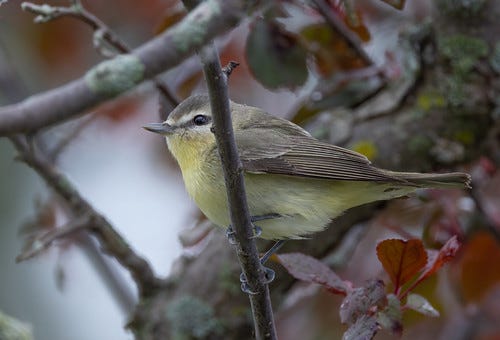
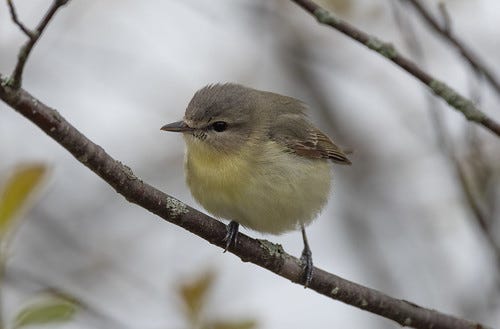
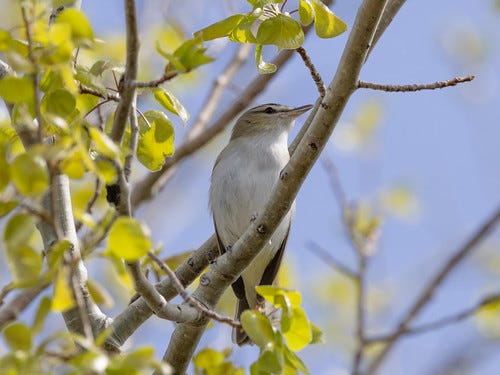
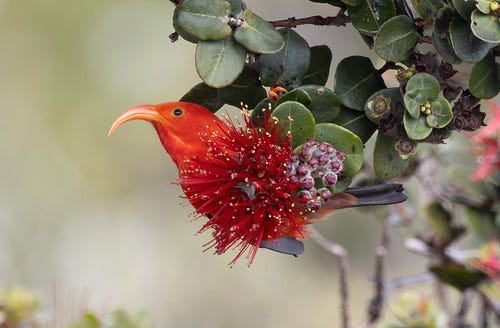
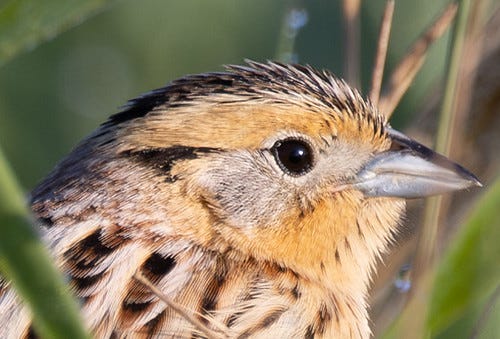
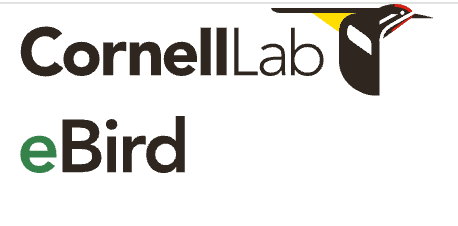
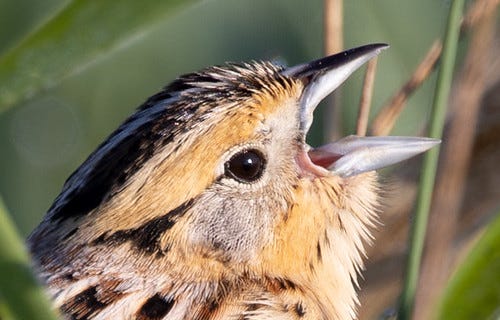
Another great post, Laura. I use Merlin extensively but never rely on it exclusively. It’s helped me find some great birds, and disappointed me when it’s been inaccurate (sometimes ridiculously inaccurate.) It’s a wonderful app to supplement my knowledge and it’s helped me learn to ID more bird songs but it’s not infallible. Merlin is just another tool in my toolbox.
Merlin is great but it does make mistakes. In my experience, it often calls out Philly Vireo when it’s really a Red-eyed singing. That is such a common mistake that I’m concerned I will miss actual Philly Vireos by assuming it’s a Merlin mistake.
Have you used the BirdWeather PUC? What a wonderful device. I’ve had one for a month and it records birds 24/7 and you can listen to all its recordings on the phone app. Just this morning it’s recorded 1691 detections of 33 species as it sits on the deck of our house in NW CT. All 33 species seem correct based on what we see and hear ourselves and listening to the recordings. But it does make mistakes, the most common one being Carolina Chickadee, which dies not occur anywhere near us. Our local land trust, aware of the occasional mistakes, in the Adirondacks has purchased two to monitor birds on a new acquisition.